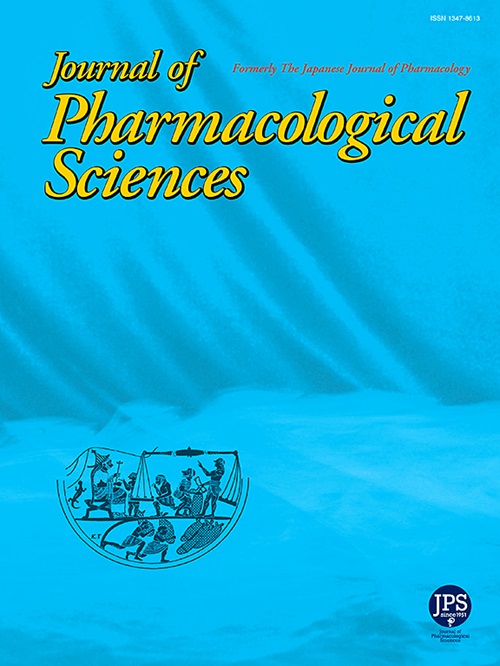Nerol enhances lipid synthesis in human sebocytes via cannabinoid receptor-2-mediated MAPK signaling
IF 2.9
3区 医学
Q2 PHARMACOLOGY & PHARMACY
引用次数: 0
Abstract
Purpose
Nerol, a natural monoterpene, is commonly used as a fragrance additive in perfumes and cosmetics due to its pleasant rose-like aromas. Nerol application possesses diverse pharmacological properties, including anti-microbial, antioxidant, antinociceptive and anti-inflammatory activities, but its effects on sebum production and the consequent skin barrier function remain elusive. Here, we explored the effect of nerol on the lipogenesis of sebocytes.
Patients and methods
Immortalized human SZ95 sebocytes were used. The intracellular lipids were quantitatively measured by western blotting or fluorescent Nile Red staining followed by fluorometric analysis, semiquantitative detection or flow cytometry. The cell proliferation and differentiation were detected with CCK8 and flow cytometry, respectively. Moreover, RT-qPCR and immunocytochemistry were used to determine the expression levels of olfactory receptor OR2W3 and cannabinoid receptor-2 (CB2) receptors in SZ95 sebocytes.The mechanism was investigated by RNA interference and Western blotting.
Results
Our findings revealed that nerol induced lipid production in SZ95 sebocytes, together with the upregulation of multiple genes related to lipid synthesis, including PPARγ, SREBP-1, and FAS. Nerol also induced sebocyte differentiation, as evidenced by elevated cellular granulation and upregulated differentiation marker genes. Mechanistically, the lipogenic effect of nerol was mediated via CB2, rather than OR2W3 and TRP channels. Moreover, MAPK signaling was involved in neurol's effect.
Conclusion
Collectively, our findings show that nerol exerts a lipogenic effect on human sebocytes in a CB2-dependent manner through the activation of MAPK pathway, suggesting the therapeutic potential of this monoterpene in controlling cutaneous disorders involving sebaceous gland dysfunction and reduced sebum production, such as atopic dermatitis, skin dryness and aging.
橙花醇通过大麻素受体2介导的MAPK信号传导增强人皮脂细胞的脂质合成
乙烯醇是一种天然的单萜烯,由于其令人愉悦的玫瑰香味,通常被用作香水和化妆品中的香料添加剂。橙花醇应用具有多种药理特性,包括抗微生物、抗氧化、抗炎和抗炎活性,但其对皮脂生成和随之而来的皮肤屏障功能的影响尚不清楚。在这里,我们探讨了橙花酚对脂细胞脂肪生成的影响。患者和方法采用人SZ95型活脂细胞。采用western blotting或荧光尼罗红染色定量测定细胞内脂质,然后进行荧光分析、半定量检测或流式细胞术。CCK8和流式细胞术分别检测细胞增殖和分化情况。RT-qPCR和免疫细胞化学检测嗅觉受体OR2W3和大麻素受体-2 (CB2)受体在SZ95皮脂细胞中的表达水平。采用RNA干扰和Western blotting研究其作用机制。结果我们的研究结果表明,nerol诱导SZ95脂质细胞产生脂质,并上调多种与脂质合成相关的基因,包括PPARγ、SREBP-1和FAS。橙花醇还能诱导皮脂细胞分化,这可以通过细胞肉芽的升高和分化标记基因的上调来证明。在机制上,橙花酚的增脂作用是通过CB2而不是OR2W3和TRP通道介导的。此外,MAPK信号也参与了神经细胞的作用。综上所述,我们的研究结果表明,橙花酚通过激活MAPK通路,以cb2依赖的方式对人皮脂细胞产生脂质作用,这表明这种单萜烯在控制皮脂腺功能障碍和皮脂生成减少的皮肤疾病,如特应性皮炎、皮肤干燥和衰老方面具有治疗潜力。
本文章由计算机程序翻译,如有差异,请以英文原文为准。
求助全文
约1分钟内获得全文
求助全文
来源期刊
CiteScore
6.20
自引率
2.90%
发文量
104
审稿时长
31 days
期刊介绍:
Journal of Pharmacological Sciences (JPS) is an international open access journal intended for the advancement of pharmacological sciences in the world. The Journal welcomes submissions in all fields of experimental and clinical pharmacology, including neuroscience, and biochemical, cellular, and molecular pharmacology for publication as Reviews, Full Papers or Short Communications. Short Communications are short research article intended to provide novel and exciting pharmacological findings. Manuscripts concerning descriptive case reports, pharmacokinetic and pharmacodynamic studies without pharmacological mechanism and dose-response determinations are not acceptable and will be rejected without peer review. The ethnopharmacological studies are also out of the scope of this journal. Furthermore, JPS does not publish work on the actions of biological extracts unknown chemical composition.

 求助内容:
求助内容: 应助结果提醒方式:
应助结果提醒方式:


